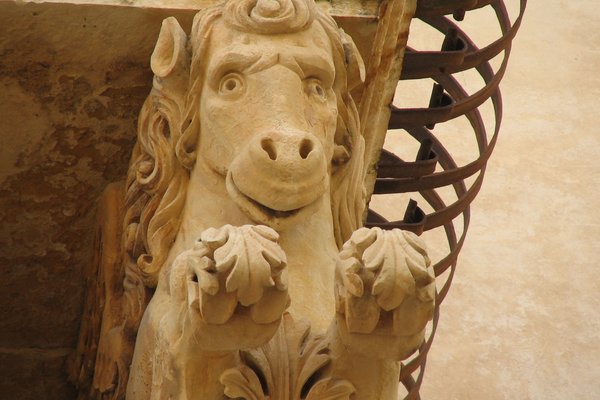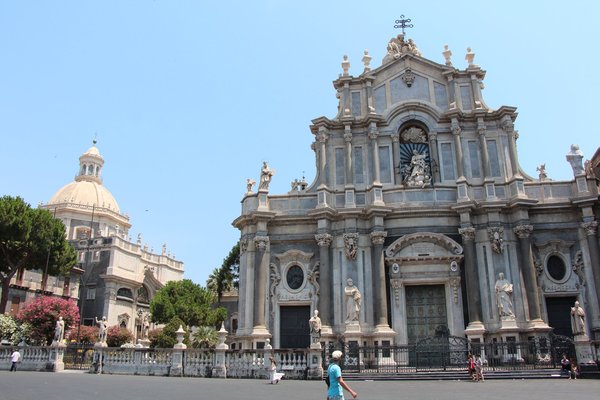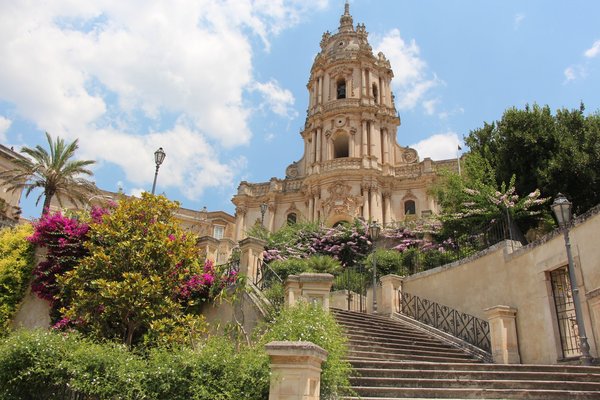Italy
Val di Noto
The Late Baroque Towns of the Val di Noto (South-eastern Sicily) are examples of 'anti-seismic' urban planning executed in the late Baroque style.
The towns here are permanently at risk from earthquakes and eruptions of Mount Etna. After a major earthquake in 1693, large public projects were started to rebuild the affected towns. The fashionable architectural style of the period was used: Baroque. It has resulted in homogenous townscapes with exuberant late Baroque monuments.
Community Perspective: It’s recommended to base yourself in the area (Noto is the biggest town) for a few days and then drive around. The component in Catania has a very different setting and the city itself is hard to love. A bit of trivia: ‘Val’ doesn’t mean Valley (it’s Siculo Arabic for “province”).
Site Info
Official Information
- Full Name
- Late Baroque Towns of the Val di Noto (South-eastern Sicily) (ID: 1024)
- Country
- Italy
- Status
-
Inscribed 2002
Site history
History of Val di Noto
- 2002: Revision
- Includes former TWHS Historical centre of Noto (1982)
- 2002: Name change
- From "The rebuilding of the Val di Noto in the Late Baroque Period (South-East Sicily)" to "The Late Baroque towns of the Val di Noto (South-eastern Sicily)" upon inscription, at the advice of ICOMOS (AB Ev)
- 2002: Inscribed
- Inscribed
- Type
- Cultural
- Criteria
- i
- ii
- iv
- v
Links
- UNESCO
- whc.unesco.org
- Official
-
- valdinoto.com — Val di Noto
- Related
-
- visitsicily.info — Visit Sicily
All Links
UNESCO.org
- whc.unesco.org — whc.unesco.org/
Official Website
- valdinoto.com — Val di Noto
Related Resources
- visitsicily.info — Visit Sicily
Community Information
- Community Category
- Urban landscape: Post-medieval European
- Human activity: Urban planning
Travel Information
Recent Connections
-
Perfect Inscriptions
2002 -
Alexandre Dumas
Dumas recounts his visit to Sicily in h… -
Located in a TCC Territory
Sicily
Connections of Val di Noto
- Individual People
-
-
Goethe
Palazzo Biscari (Catania): "Einen berühmten Besucher kann der Palazzo Biscari verzeichnen: Johann Wolfgang Goethe, der am 3. Mai 1787 vom Fürsten Vincenzo empfangen wurde." (wiki de) -
Alexandre Dumas
Dumas recounts his visit to Sicily in his work "Le Speronare", during which he visited Catania, Syracuse, the Valley of the Temples in Agrigento and ascended the Etna.See fr.wikipedia.org
-
- Trivia
-
-
Cultural sites closely connected to volcanoes
"Catania could be affected by volcanic eruption from Mount Etna" (AB ev)
-
- History
-
-
Knights Hospitaller
Santa Maria dell'Itria in Ragusa: The initial church "was erected (...) in the 14th century (...) by the order of the Knights of Malta".See en.wikipedia.org
-
- Architecture
-
-
Neoclassical architecture
Noto Cathedral: "In the 19th century the dome had to be reconstructed twice, ending up as a Neo-Classical construction, after collapses caused by earthquakes."See en.wikipedia.org
-
Rococo
Palazzo Biscari (Catania): "In the interior is the "Feasts Hall", in Roccoco style" (wiki) -
Domes
Catania Cathedral, and Badia di Sant'Agata (Catania), Ragusa Cathedral, Cathedral of San Giorgio and Santa Maria dell'Itria (Ragusa) -
Carrara marble
Catania Cathedral: "The parvise is separated from the cathedral square by a balustrade in white stone, featuring five large statues of saints in Carrara marble."See en.wikipedia.org
-
Gothic
anta Maria delle Scale in Ragusa: "While badly damaged in the 1693 earthquake, half of this church was rebuilt in Baroque style, while half retained the original Gothic style (including the three Catalan-style portals in the right aisle)." (Wikipedia)See en.wikipedia.org
-
Spolia
Catania cathedral: "(...) the three semicircular apses, composed of large lava stones, most of them recovered from imperial Roman buildings." The "Baroque façade (...) has three levels with Corinthian columns in granite, perhaps taken from the Roman Theatre of the city."See en.wikipedia.org
-
Octagons
The octagonal dome of the Badia di Sant'Agata in CataniaSee en.wikipedia.org
-
Baroque
-
Art Nouveau
Teatro Sangiorgi (Catania)See en.wikipedia.org
-
- Damaged
-
-
Damaged in World War II
The Palazzo del Seminario dei Chierici "suffered during the bombardments of World War II, prompting the construction of a new seminary at San Giovanni la Punta, completed on 15 August 1951."See en.wikipedia.org
-
Destroyed or damaged by Earthquake
(Jan 9 1693, led to rebuilding in constant style)
-
- World Heritage Process
-
-
Extended from original TWHS
extended from Historical centre of Noto (1982) -
Perfect Inscriptions
2002
-
- Religion and Belief
-
-
Carmelites
"Santa Teresa (...) is a Roman Catholic parish church and Discalced Carmelite cloistered convent" in Catania.See en.wikipedia.org
-
Dominican Order
San Domenico at Noto, Domenican convent at Caltagirone -
Jesuit Order
Santa Maria del Gesu at Ragusa, Jesuite college at Notto and at Caltagirone -
Franciscan Order
St. Francis Church at Ragusa, Franciscan convent at Caltagirone -
Religious Relics
San Giacomo, Caltagirone: "the interior houses a relic, putatively the arm of St James, inside a silver box engraved with reliefs depicting the life of the saint".See en.wikipedia.org
-
Legends and Folk Myths
The Elephant statue of the fountain on Piazza del Duomo in Catania is also called U Liotru. It "owes its appellation to the mispronunciation of the name Heliodorus. The latter, according to popular legends, was a nobleman from Catania who allegedly tried unsuccessfully to become bishop of the diocese. Having fallen from grace, he (...) would oppose Bishop Leo II the Thaumaturge, who would then condemn him to be burned alive in the Forum Achelles. This phantom character was linked to the elephant because a legend said that he was its sculptor and even used to ride it to travel from Catania to Constantinople. Also according to the legend, Bishop Leo allegedly had the statue taken outside the walls so that it would be forgotten, but the people would still give it divine honors." (wiki)See en.wikipedia.org
-
12 Apostles
San Giacomo, Caltagirone: "the interior houses a relic, putatively the arm of St James, inside a silver box engraved with reliefs depicting the life of the saint".See en.wikipedia.org
-
Benedictines
San Niccol? l'Arena in Catania -
Nunneries
Badia di Sant'Agata in CataniaSee en.wikipedia.org
-
Cistercian
Santa Maria delle Scale in Ragusa "was built by the Cistercian monks of the Abbey of Santa Maria di Roccadia in Lentini, in the first half of the 13th century".See en.wikipedia.org
-
Augustinian Order
"Santa Rita in San'Agostino (...) in Catania (...) was formerly attached to an Augustinian convent, and known as Sant'Agostino."See en.wikipedia.org
-
Cathedrals
Bas Cat di S Giuliano (Caltagirone), Cat di San Nicolo (Noto), Cat di S Giovan Bat (Ragusa), Bas Cat di S Agata (Catania)
-
- Human Activity
-
-
Frescoes or murals by famous painters
The ballroom of the Palazzo Biscari has frescoes painted by Matteo Desiderato and Sebastiano Lo Monaco. (Wikipedia)See en.wikipedia.org
-
Festivals
"The Piazza del Duomo [in Catania] is a focal point for the annual Festival of Saint Agatha, a three-day event that begins on February 3 with a procession known as "della luminaria", from the church of Sant'Agata alla Fornace to the Cathedral here. This is followed by an evening outdoor concert and fireworks." (Wikipedia)See en.wikipedia.org
-
- Constructions
-
-
Sundial
Church of San Nicolò l'Arena (Catania) -
Unfinished constructions
Church of San Nicolò l'Arena -
Baths
Terme della Rotonda in Catania, "the remains of one of several Roman public baths in the city"See en.wikipedia.org
-
Theatres and Opera Houses
Teatrino at Caltagirone -
Clock Tower
Catania Cathedral, Noto CathedralSee en.wikipedia.org
-
Notable Bridges
Ponte di San Francesco at Caltagirone -
Freestanding Bell Tower
Santa Maria della Stella in Militello in Val di CataniaSee en.wikipedia.org
-
Monumental Fountains
The Elephant Fountain and the Amenano Fountain on Piazza del Duomo in CataniaSee en.wikipedia.org
-
Obelisk
The Elephant Fountain on the Piazza del Duomo in Catania is a fountain with a "black basalt statue of an elephant". "On the animal's back is an Egyptian-style obelisk, 3.66 meters high, made of granite, hypothetically from Syene; it has no hieroglyphics, but is decorated with Egyptian-style figures that do not constitute meaningful hieroglyphic writing."See en.wikipedia.org
-
- WHS on Other Lists
-
-
Most beautiful villages
Militello Val di Catania, Palazzolo Acreide are among I piú bei borghi d'Italia ('Italy's most beautiful hamlets') -
Located in a TCC Territory
Sicily -
UNESCO Intangible Cultural Heritage Lists
Catania, Opera dei Pupi, Sicilian Puppet Theatre
-
- Timeline
-
-
Built in the 17th century
representative of a great, post-seismic rebuilding achievement in the decades following 1693 (AB ev)
-
- WHS Hotspots
- Science and Technology
-
-
Universities
"The Palazzo dell'Università or Palazzo Centrale dell'Università di Catania is a monumental palace located in Piazza Universitaria, in the center of the city of Catania (...). Since its construction, it has housed the main offices of the University of Catania, and stands across the piazza from the Palazzo San Giuliano, also housing offices of the university. It presently houses the offices of the rector, university offices, the "Giambattista Caruso" Regional Library, and a small museum of geology and archeology."See en.wikipedia.org
-
- WHS Names
-
-
Misleading WHS Names
Only very small parts of Modica and Scicli towns and Catania are included, so the name 'Baroque Towns' seems to be overstating it. An alternative could be 'Baroque heritage of the Val di Noto'. -
Name changes
From "The rebuilding of the Val di Noto in the Late Baroque Period (South-East Sicily)" to "The Late Baroque towns of the Val di Noto (South-eastern Sicily)" upon inscription (AB Ev)
-
News
No news.
Recent Visitors
Visitors of Val di Noto
- Adrian Turtschi
- Afshin Iranpour
- Alexander Barabanov
- Alexander Lehmann
- Alikander99
- Ammon Watkins
- Ana Lozano
- Argo
- Artur Anuszewski
- Ask Gudmundsen
- Aspasia
- Atila Ege
- Badwater
- BaziFettehenne
- Bill Maurmann
- Bin
- Birgitte Sørensen
- Bram de Bruin
- Brendan Carroll
- Bropyk
- Can SARICA
- Caspar
- Cezar Grozavu
- chenboada
- chenqtao
- chiuliqi
- ChrisN
- christof
- Christoph
- Claire Bradshaw
- Clyde
- Cristina Erba
- ctravel
- CugelVance
- czesioszpachelka
- Dagmara
- Daniela Hohmann
- Daniel Chazad
- Dan Pettigrew
- David Berlanda
- Deffra
- del
- Dimitar Krastev
- Dimitrios Polychronopoulos
- Don Irwin
- Doubanjiang
- Dr. Caligari
- Echwel
- Elia Vettorato
- eljx1988
- Els Slots
- Emilia
- Emili Xaus
- Erfe91
- Erik Jelinek
- Eva Kisgyorgy
- Evgenii
- Fan Yibo
- Farinelli
- Federico P.
- Feldhase
- Felicité
- Femke Roos
- Filip Murlak
- Flexiear
- Fmaiolo@yahoo.com
- FS
- Geert Luiken
- George Gdanski
- GeorgeIng61
- giulio25
- grimloch
- Hadrianus
- Hammeel
- Harald T.
- Harry Mitsidis
- Hubert
- Iain Jackson
- Ian Cade
- Igloo
- Ilya Burlak
- Ivan
- Ivan Rucek
- Jacob Otten
- Jakob F.
- Jana and Matt
- Janina Lehmann
- Jasam
- Jawnbeary
- Jeanne OGrady
- Jens
- Jezza
- João Aender
- Joel on the Road
- Jonas Kremer
- Juha Sjoeblom
- Jurre
- Kasper
- Ken DJ
- KentishTownRocks
- Klara Woodson
- ko9757
- Krijn
- Krzysztof B
- La Concy
- Lara Adler
- LaVale
- Liamps91
- Lisu Marian
- Loic Pedras
- Luboang
- Lucas Del Puppo
- Lucio
- Ludvan
- Luis Filipe Gaspar
- Lukasz Palczewski
- Maciej Gil
- Maciej Gowin
- Malgorzata Kopczynska
- Manuelfunk
- MarcoB_0
- marc Rouserez
- Martin
- Martina Rúčková
- Marton Kemeny
- Matejicek
- Mateusz
- MAURO PODDA PANI
- MaxHeAnouBen
- MaYumin
- MH
- MichaelH
- Michael Novins
- Mikko
- Mikko Syrjä
- Ming_9734
- Mo-han Je
- Monica Tasciotti
- nan
- Nasebaer
- Niall Sclater
- Nihal Ege
- PabloNorte
- palka25
- Paola Laura
- Patrik
- Paul Schofield
- PeterH
- Peter Lööv
- Philipp Leu
- Philipp Peterer
- phillipmeng
- Pink Bunny
- Piotr Wasil
- PlacesWeHaveBeenTo
- preunesco
- Priyaranjan Mohapatra
- puessergio
- Purrfect
- Rafał Kałczuga
- Rahelka
- Ralf Regele
- Randi Thomsen
- reddargon
- Remigiusz
- Reza
- rivr
- RobRos
- Roel Sterken
- Roger Ourset
- Roman Bruehwiler
- Rudegirl
- Sabrina Liebehentschel
- Samy G
- Sandmann15
- Schnitzel
- Sergio Arjona
- Shandos Cleaver
- Simonf
- SirLoydd
- Solivagant
- Ssong.x
- Stanislaw Warwas
- stephanvermeulen
- Stijn
- Svein Elias
- Szucs Tamas
- Taotao Chen
- Tarquinio_Superbo
- Tevity
- Thomas Buechler
- Thomas van der Walt
- Tim Allen
- Timothy C Easton
- Tom Flaten
- tony0001
- Tony H.
- tquist24
- travellingcat
- triath
- Tsunami
- Twobaconsandaboston
- usagi1974
- Valentina
- ValiaVeweth
- Vanessa Buechler
- Van Hung
- Viaje al Patrimonio
- vino4vino
- voyager
- WILLIAM RICH
- Wojciech Fedoruk
- Xander Huang
- Xiquinho Silva
- Yevhen Ivanovych
- Zoë Sheng
Community Reviews
Show full reviews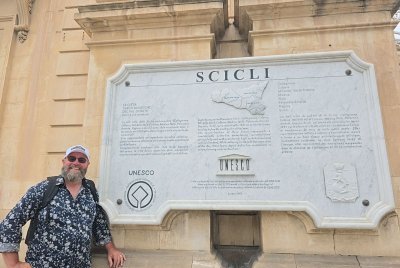
This WHS was last reviewed in 2021, so I thought I would provide an update in 2025. We have been based in Syracuse (another UNESCO site) for the last 3 weeks and used this location as a base to explore all 8 of these Baroque Towns. On average we spent about 3- 4 hours in each town, I think if you spend any less you are not doing each location due diligence to explore the OUV of each site. Ragusa and Modica were a long day trip by train to explore both on the same day. Scicli, Noto, Catania and Militello were all individual day trips by the Train. Palazzolo Acreide and Caltagirone, we hired a car for a couple of days as we also wanted to explore the Villa Romana el Casale (another WHS site) as well explore the Necropolis of Pantalica which is part of the Syracuse site, but some distance from Syracuse itself that requires a hire car.
We have a Eurail Global Pass, so it made it very easy to jump on and off trains, using the App to book with ease and we were very flexible with our days and times for visiting. Syracuse has a number of Hire Car companies, so shop around for a good rate. 2 days hire car set us back 80 Euro plus fuel. One of the downsides of visiting by train though is that the train station is often not in the centre of the city with the …
Keep reading 0 comments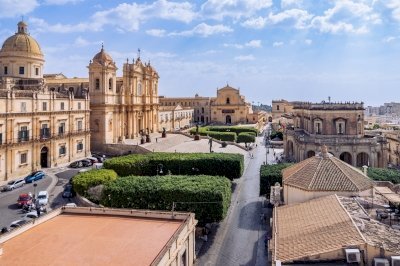
On a trip around Sicily in September of 2021, I stayed several nights in Noto and visited Scicli, Ragusa, Palazzolo, and Catania each for a few hours.
Noto is pleasant and easy to explore (its historic core is built essentially on a grid pattern). Climbing to the roof terraces of San Carlo is highly recommended, and the balconies of Palazzo Nicolaci are definitely a remarkable detail. Stepping into churches for a few minutes is always an easy thing to do; visiting Palazzo Castelluccio or Palazzo Nicolaci is of limited reward. In general, as delightful as the exterior Baroque ensembles are in the area, the interiors behind them are somewhat underwhelming.
Ragusa is the most visually striking of all villages when Ragusa Ibla is viewed from the terraces of Ragusa Superiore (most specifically, the viewpoint by Santa Maria delle Scale). Both parts of town are worth walking through and there are numerous visual highlights, but just as in Noto, the church interiors felt not as remarkable as the exteriors.
Scicli's inscribed area is pretty small and looks monumentally attractive. Unfortunately, all churches were closed at the time that we visited, so I have no evidence of whether they continue the theme of being more impressive on the outside. One of the key architectural monuments, Palazzo Beneventano is a gorgeous Baroque building that can only be admired from the street. Palazzo Spadaro, which we visited on a whim, was barely worth a 15-minute walk-through for the negligible cost of …
Keep reading 0 comments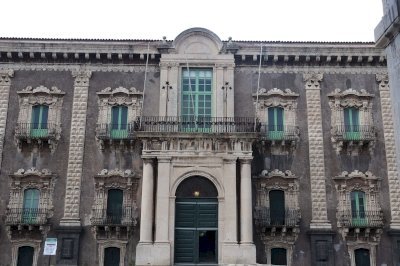
''Less is more'', they say. To me it seemed feasible to cover Noto and Modica by train with enough time to return and sleep in Catania, but then I was told at the train station: "Yes, there is a train doing Siracusa-Catania at those hours, but you cannot get a ticket for it. If you go to Modica, you will have to spend the night in Siracusa''. Right. Change of plans, skipping Modica and getting more time in Catania.
Since reviews have been written on Noto, I will just say that as of June 2021 the Duomo's renovation is done (the cupola has hipster-saints, if you ask me) and they are renovating now San Domenico (the one in Els and Ian's photos).
I found OUV in Catania as well. Noto's balconies reminded me of Valletta, Catania's Benedictine Monastery reminded me of nothing - I haven't seen those grey walls with white baroque details before. Underneath the peel you won't find limestone, but lava rocks. Catania's baroque was shaped in the aftermath of 1693, but with the help of Etna as well.
Which are the monuments? Sant'Agata Cathedral (Cappella della Vergine needs booking in advance, Cappella di Sant'Agata is open outside of mass times) Palazzo degli Elefanti (the City Hall) and Palazzo del Seminario dei Chierici (Museo Diocesano) in Piazza del Duomo with u Liotru in the middle (the elephant is maybe Carthaginian or bizantine, add possible inspiration from Bernini's in Rome for the monument and voilà), Chiesa …
Keep reading 0 comments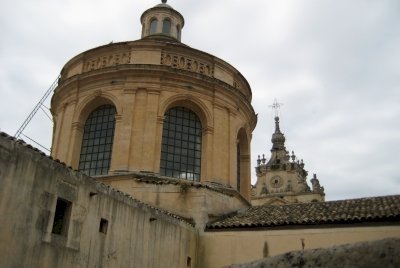
During my second trip to Sicily in 2014, we visited also several Barroque towns belonging to this WHS. We went from Enna by car heading to Ragusa, where we took a hotel in the upper town, and we went through Caltagirone, but, unfortunately, we had no time to stop there. Next morning we continued further to the South and visited Modica and Scicli. After strolling in baroque towns we refreshed ourselves by swimming in Mediterranean near Pachino, spent night on the mountain above Avola and continued to Siracuse…
Thus, I explored the components of Ragusa/Ragusa-Ibla, Modica and Scicli, and I could see Caltagirone only through the car window that is not sufficient, of course.
Very recently, I checked the extent of the core zones, and I was really surprised as the inscribed parts of the towns are in some cases very different from what I thought.
In Caltagirone, the core zone is quite big and encompasses the whole central part of the town, but we crossed only the buffer zone by car…
In Ragusa, not only almost all Ragusa-Ibla but also surprisingly a big portion of the upper town including the main street below he Post office (including the hotel we were accommodated) and the junction between both districts is the part of the core zone.
In Modica, only the churches of S Giorgio (PHOTO) and S Pietro are inscribed and the rest - lower and upper towns of Modica are in the buffer zone …
Keep reading 0 comments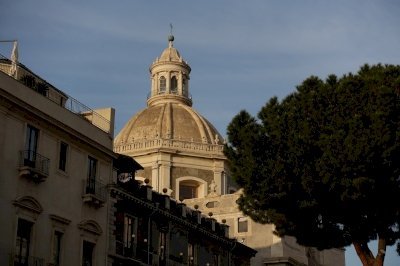
Having forgotten my sweater on a bus and being in dire need of a new one, I made a short unplanned shopping stop in Catania. Catania is the hub for eastern Sicily and I was passing through anyhow on my way to Milazzo for the Eolian Islands.
My original plan had been to use Catania as my base for the remainder of my Sicily trip after returning from the Eolian Islands. The first 15min in Catania upon arrival made me revise my plans. The area around the train station is downtrodden and simply terrible. It really had me question the world heritage designation. The overall picture improved when I made my way to the core zone. Especially, the area along Via Etnea is nice with the Piazza del Duomo being the highlight. On sunny days you can see the Etna. Still, this is Italy, so nice is not good enough. As a consequence, I rearranged my travel plans limiting my time in Catania to a minimum.
My second stop was Ragusa. I came by bus from Catania. It's nice, but not spectacular. The nicest views were from the bridges connecting both parts of the city across a deep valley. Had I only visited Ragusa and Catania, I would have really doubted the inscription.
As my last stop, I made my way to Noto. Noto is a spectacular Baroque town dotted with plenty of churches. The most striking feature are the honey-colored limestone buildings.
One …
Keep reading 0 comments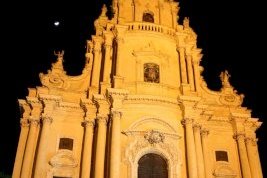
March 2019 - We passed the sites of Val di Noto several times on our journey. Day 1 we were in Catania. It definitely has some beautiful baroque churches and main street. The top attraction is the black elephant statue made from lava. Catania has a lot of food, Pasta Norma is a typical dish with eggplant and really delicious.
On day 8 of our journey we visited Caltagirone. Due to the bad wheather it was not as impressive as we anticipated. We spend the next night in Ragusa. We were amazed by this city build on two rocks. It does have some typical baroque cathedrals but basically its a small twon with windy, narrow roads. Escpecially at night it has a very unique atmosphere. Next day we went on to Modica. Nice but only for a few hours. Noto, which was completely build from scratch after an devistating earthquake, was worth visiting for a whole day. It has a baroque town planning and some amazing piazzas. The balconies with angels or horses, are worth a small detour on your walk through the city.
Keep reading 0 comments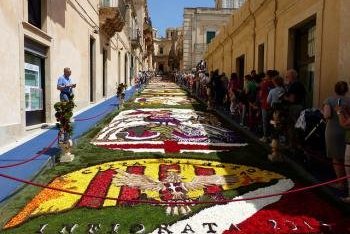
I visited this WHS in May 2015. This WHS is made up of a series of quientessential Sicilian baroque towns and cities. The most pretty and popular one of them all is Noto. I was lucky to visit during the Infiorata di Noto which takes place every year on third weekend of May. Via Nicolaci which is the street with the most famous baroque balconies is adorned with a huge flower carpet, while other important squares and sites have minor ones. For some odd reason, this year's theme was Catalonia! The best view to be had is from the Bell Tower of the Church of San Carlo. I knew that Noto would be packed during my visit so I decided to visit only after having visited all the other sites mentioned in the WHS inscription to be able to appreciate the Sicilian baroque architecture in a peaceful and quiet environment. Noto is closest to Syracuse and Catania so that makes it well on the beaten path for day trips. My first experience was in Catania which I had already visited when I was younger but I didn't count it as a visit because I feel it does not represent the OUV this WHS indeed has. Once again, I came back with the same feeling and I wouldn't recommend anyone wanting to pick just a few towns out of this series to visit Catania. Next I visited Caltagirone which is most famous for its ceramic tiles. Again I was not impressed …
Keep reading 0 comments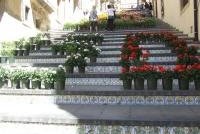
Over several days I managed to visit all 8 of the Baroque towns included in this WHS. All were accessible by train except Pallazolo Acredie which I reached by bus from Syracuse. The highlights were :
Pallazolo Accredie - the restored Basilica of St Paul, and the unrestored church of St Sebastian
Noto - the now fully restored cathedral of St Nicolo, and the church of St Domenico
Ragusa - with 9 churches and 6 palaces listed, the refined church of Purgatory and the masonry details of the church of St Mary of Itria in Ragusa Ibla, and the stylish Palazzo Schnina in Ragusa Superiore
Scicli - the tiled interior of the church of St Michael, the ornate balcony supports of the Palazzo Spadera (tourist office) and Palazzo Benventano
Modica - the church of St Peter and the spectacular interior of the cathedral of St George, well worth the climb to see this
Caltagirone - famed for its tiles, especially the monumental staircase leading to the church of Santa Maria del Monte, and tiled murals dotted through the town
Militello - the smallest of the towns with the church of St Nicolo (now a museum) and the church of Sta Maria della Stella and its campanile
Catania - the largest town with many Baroque buildings including 4 churches in via della Crociferi alone plus the church of Sta Agata opposite the duomo and the Palazzo Biscari.
Keep reading 0 comments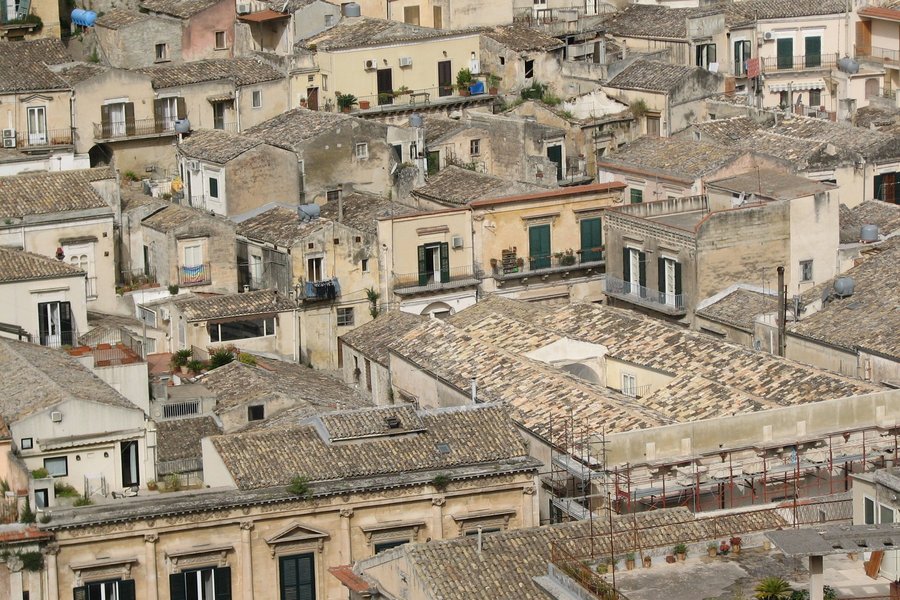
I had the opportunity to visit all 8 cities being part of this WHS. Summer is hot in Sicily but one of the outcomes of such high temperatures is that you don't see a lot of people walking around especially during the warmest part of the day. I have good memories for each one of them. I was in Caltagirone during the Luminaria (end of July) and enjoyed the spectacle of lightning the scalinata with candles. I visited Militello in Val di Catania with the chairman of the local ArcheoClub who came to me just because I was taking pictures of one of the many churches that can be seen and wanted to share with me his knowledge of the town history. I combined the visit of Palazzolo Acreide with the old Akrai. I was amazed with the brightness of Scicli. I did find difficult to walk up and down hills in Modica. I couldn't avoid the fish market odours between the Duomo and the Ursino Castle in Catania. I found Noto being like an open museum, nice and clean. But the one I preferred was Ragusa (Ragusa Ibla more than the new Ragusa). Once I started visiting one I couldn't miss the other ones. My wife didn't cope with it and let me finish the tour alone.
Keep reading 0 comments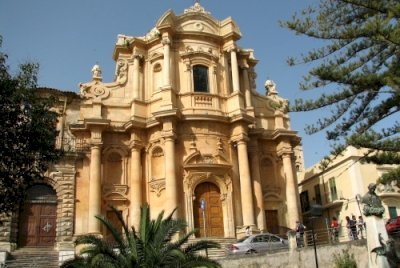
The first days of my stay in Sicily I spent in the town of Noto. Its main street, the Corso Vittorio Emanuele, is lined with wonderful baroque palaces and public buildings: the ideal surroundings for an Italian evening stroll. The San Nicoló Cathedral unfortunately is hidden under scaffoldings at the moment, but there are plenty of other monuments to admire. The Palazzo Nicolaci di Villadorata was the highlight for me: its balconies are ornamented with cherubs, lions and horses, all very fine in detail. A great spot to try out my new camera!
Using a rental car, it's very easy to visit some of the other towns around Noto. I drove to Modica, Ragusa and Scicli on Easter Monday.
Modica is an elegant town with probably the best baroque church of the valley. There are amazing views. Ragusa is very different: all hills and steps. The main church (Duomo di San Giorgio) currently is also being renovated like the one in Noto.
Scicli finally is way off the beaten track, a huge block of houses in the middle of nowhere that looked completely desolate.
ICOMOS compares the Val di Noto to Mdina and Valetta on Malta. Also tainted by the same earthquake (though to a lesser degree), the same Arab influences and the elaborate balconies are there. The Valley is a good place to base yourself for a few days, and enjoy the high-quality architecture, the relaxed atmosphere and (as always in Italy) the food.
Keep reading 0 comments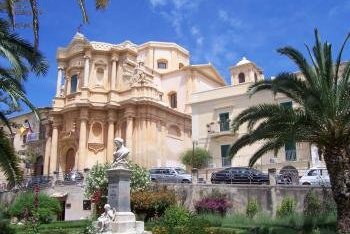
I spent a morning in the town of Noto, and enjoyed strolling along Corso Vittorio Emanuele, sitting in café’s and taking in the great façade’s. There was still a lot of restoration going on when we visited and there was no access to the Duomo, however the façade was viewable when we first turned up as the hoardings covering it were taken down, and it did look very impressive.
As with Els we were very impressed with the Palazzo Nicolaci di Villadorata and its great balconies. The whole of this bloc of the town was had speakers playing soft rock (Michael Bolton) it was not really noticeable when we first turned up but became a little irritating after a while. The street leading up the hill next to the Palazzo was being prepared to host decorative flowerbeds so it would be lovely to see this all in bloom in the summer.
I really enjoyed our time here, and the architecture was very impressive and displayed many of the key characteristics of Sicilian Baroque. I had hoped to see a few more of the town however a delayed ferry stopped us from getting to these. I feel that I can claim this as a visited site, mostly based on intent.
Noto was a really lovely place to spend a few hours, and the architecture was very impressive, but unfortunately under extensive restoration. Still it was great place to wonder around and fuelled by the excellent coffee and ice cream.
Keep reading 0 comments
